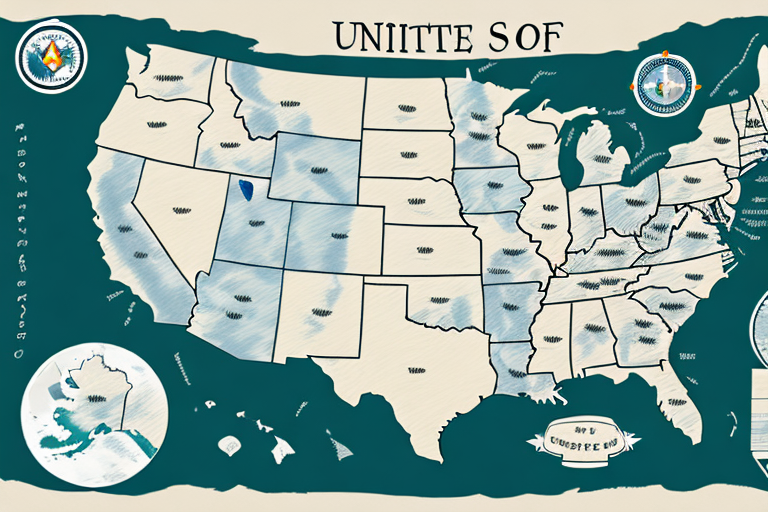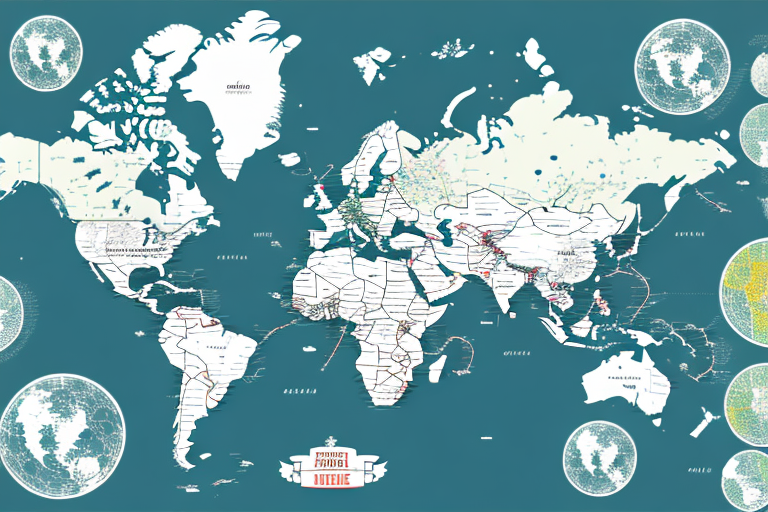Understanding UPS Shipping Zones
UPS shipping zones are geographic regions that UPS uses to calculate the cost and delivery time of shipments. These zones range from Zone 1 to Zone 8 for domestic shipping, with Zone 1 being the closest to the origin and Zone 8 the farthest. Understanding these zones is crucial for businesses that regularly ship products, as it helps in optimizing shipping costs and improving delivery efficiency.
How UPS Determines Shipping Zones
UPS determines shipping zones primarily based on the distance between the shipment's origin and destination ZIP codes. The zones are calculated using the UPS Zone Chart, which maps ZIP codes into different zones. The higher the zone number, the greater the distance, and consequently, the higher the shipping cost.
Factors Influencing Zone Classification
- Distance: The primary factor, measured in miles between ZIP codes.
- Package Weight and Dimensions: Heavier and larger packages may incur higher costs.
- Shipping Method: Options like ground, air, or expedited shipping affect the zone classification.
- Additional Services: Services such as insurance, signature confirmation, and special handling can impact costs.
Impact of Distance and ZIP Codes on Shipping Costs
The ZIP codes of both the origin and destination play a significant role in determining the UPS shipping zone and, subsequently, the shipping cost. Here's how:
- Distance: Greater distances between ZIP codes place shipments in higher zones, leading to increased costs.
- ZIP Code Density: Areas with high delivery volumes might have optimized rates.
- Regional Economic Factors: Economic conditions in certain regions can influence shipping rates.
Additionally, UPS provides tools like the Zone Locator to help businesses determine the appropriate zone for their shipments based on ZIP codes.
Calculating Shipping Costs Based on UPS Zones
Calculating shipping costs with UPS involves several steps:
- Identify Origin and Destination ZIP Codes: Use the UPS Zone Locator to determine the zone.
- Determine Package Details: Include weight, dimensions, and any additional services required.
- Select Shipping Service: Choose from options like Ground, Expedited, or Next-Day Air.
- Use the UPS Rate Calculator: Access the UPS Rate Calculator to obtain an accurate shipping quote.
According to UPS, businesses can save up to 15% on shipping costs by optimizing package sizes and selecting the most suitable shipping zones.
UPS Services for Different Shipping Zones
UPS offers a variety of shipping services tailored to different shipping zones and business needs:
Ground Shipping
UPS Ground is the most cost-effective option for non-urgent shipments within the continental United States. Suitable for packages weighing up to 150 pounds, it offers reliable delivery times based on distance.
Air Shipping
UPS offers multiple air shipping options for faster delivery, including:
- UPS Next Day Air: Guaranteed overnight delivery.
- UPS 2nd Day Air: Delivery within two business days.
- UPS 3 Day Select: Delivery within three business days.
These services are ideal for time-sensitive shipments and businesses requiring expedited delivery.
International Shipping
For international shipments, UPS provides services like Worldwide Express, Worldwide Expedited, and Worldwide Saver, each offering different delivery speeds and levels of service.
Strategies to Optimize and Reduce Shipping Costs
Businesses can implement several strategies to minimize shipping costs based on UPS zones:
Choose the Right Shipping Service
Selecting the most appropriate shipping service based on the urgency and destination can lead to significant savings. For example, using UPS Ground for non-urgent shipments within the same region can reduce costs.
Optimize Packaging
Efficient packaging minimizes weight and dimensions, directly impacting shipping costs. Utilize lightweight materials and appropriately sized boxes to avoid excess charges.
Leverage Volume Discounts
UPS offers volume-based discounts for businesses that ship regularly. Enrolling in UPS My Choice for Business can provide access to lower rates and additional benefits.
Utilize Technology and Tools
Using UPS’s suite of tools, such as the Time and Cost Calculator, helps in selecting the most cost-effective shipping options.
Best Practices for Shipping via UPS Zones
Adhering to best practices ensures efficient and cost-effective shipping:
- Accurate Labeling: Ensure that all shipment labels are clear and accurate to avoid delays.
- Consistent Packaging: Maintain consistency in packaging sizes and materials to streamline the shipping process.
- Track Shipments: Use UPS tracking to monitor shipments and address any issues promptly.
- Understand Customs Requirements: For international shipments, ensure compliance with all customs regulations to prevent delays.
Domestic vs International Shipping Zones with UPS
UPS categorizes domestic and international shipments differently:
Domestic Shipping Zones
Within the United States, UPS has nine shipping zones based on distance, with Zone 1 being the closest (up to 150 miles) and Zone 9 the farthest (over 1,800 miles). Domestic shipments benefit from shorter delivery times and lower costs within closer zones.
International Shipping Zones
International shipments are classified based on the destination country and the type of service selected. Factors like customs clearance, international regulations, and longer distances contribute to higher shipping costs and extended delivery times compared to domestic shipments.
For more information on international shipping, visit the UPS International Services page.
Optimizing Your Shipping Strategy Based on UPS Zones
To enhance your shipping strategy, consider the following steps:
- Analyze Shipping Patterns: Review your business’s shipping data to identify common origins and destinations.
- Select Appropriate Shipping Services: Match shipping services to zone requirements and customer expectations.
- Negotiate Rates: Engage with UPS account representatives to negotiate better rates based on your shipping volume.
- Implement Technology Solutions: Integrate shipping software that can automate zone determination and rate calculation.
By systematically optimizing these aspects, businesses can significantly reduce shipping expenses and improve operational efficiency.






















